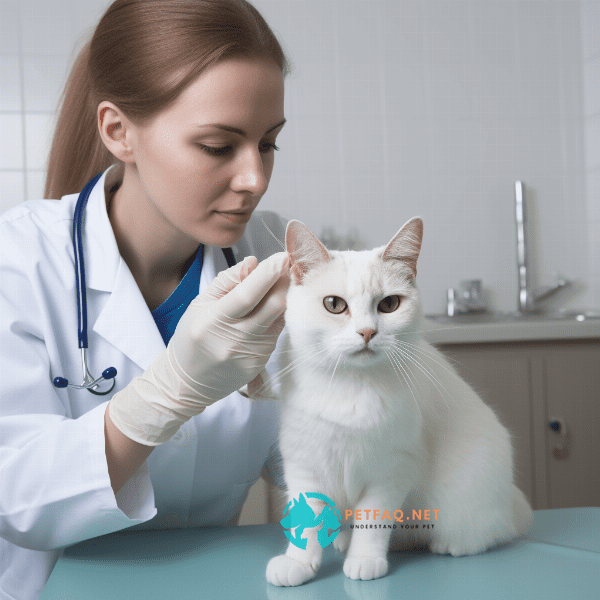Table of Contents
- Understanding Toothless Cats: Causes and Prevalence
- The Challenges of Caring for a Cat Without Teeth
- Dietary Considerations for Toothless Cats
- Maintaining Oral Hygiene in Toothless Cats
- Adapting Your Home for a Toothless Cat
- The Joys of Living with a Toothless Feline Companion
- Common Misconceptions About Toothless Cats
- Conclusion: Celebrating the Resilience of Feline Toothless Wonders
Understanding Toothless Cats: Causes and Prevalence
Just like humans, cats can also lose their teeth due to a variety of reasons. However, unlike humans, cats do not have the luxury of getting dental implants or dentures. As a result, tooth loss can be a serious issue for felines, affecting their overall health and quality of life. In this section, we will discuss the causes and prevalence of toothless cats.
Causes:
The most common cause of tooth loss in cats is periodontal disease. This is a bacterial infection that affects the gums, leading to inflammation and eventually tooth loss. Other causes include trauma, such as when a cat falls or gets hit by a car, oral tumors, and congenital conditions.
Prevalence:
Tooth loss is not uncommon in cats, especially as they age. According to a study published in the Journal of Veterinary Dentistry, more than 80% of cats over the age of three have some form of dental disease. This can include periodontal disease, tooth decay, and even oral cancer.
Cats without Teeth:
When a cat loses its teeth, it can affect their ability to eat and groom themselves properly. This can lead to malnutrition and poor coat condition. However, with the right care and support, toothless cats can still live happy and healthy lives.
In conclusion, tooth loss is a common issue in cats, and it can have serious consequences for their health and wellbeing. As responsible pet owners, it is our duty to ensure that our feline companions receive proper dental care and attention, and to provide them with the support they need if they lose their teeth.

The Challenges of Caring for a Cat Without Teeth
Caring for a Cat Without Teeth can be challenging, but it is not impossible. In this section, we will discuss some of the challenges that come with caring for a toothless cat and how to overcome them.
Dietary Challenges:
One of the biggest challenges of caring for a cat without teeth is their dietary requirements. Since they cannot chew their food properly, they need to be fed soft or moist food. This can be more expensive than regular cat food, and some cats may be picky eaters.
Oral Hygiene:
Even though toothless cats do not have teeth, they still require oral hygiene care. This can include brushing their gums and tongue, and providing dental chews or toys to help keep their mouth clean and healthy.
Potential Health Issues:
Toothless cats are more susceptible to certain health issues, such as gum disease and infections. Regular check-ups with a veterinarian are essential to ensure that any potential issues are caught early and treated promptly.
Adaptations to the Home Environment:
Toothless cats may require adaptations to their home environment, such as soft bedding and easy access to food and water. They may also require help with grooming themselves, especially if they have long hair.
In conclusion, caring for a cat without teeth can be challenging, but with the right care and attention, they can still live happy and healthy lives. As pet owners, it is our responsibility to adapt to their needs and provide them with the support they require to thrive.

Dietary Considerations for Toothless Cats
Proper nutrition is crucial for all cats, but it is especially important for toothless cats. Since they cannot chew their food properly, they require a special diet that is soft and easy to digest. In this section, we will discuss the dietary considerations for toothless cats.
Soft and Moist Food:
Toothless cats require soft and moist food that can be easily swallowed and digested. This can include canned wet food or homemade diets that are specially formulated for cats without teeth. Dry kibble may also be an option if it is soaked in water or broth to soften it.
High-Quality Protein:
Protein is essential for a cat’s health, and toothless cats require high-quality protein in their diet. This can include lean meats such as chicken, turkey, or fish, as well as eggs and dairy products.
Avoiding Hard or Crunchy Foods:
Toothless cats cannot eat hard or crunchy foods, such as kibble or dental treats. These foods can cause discomfort or even injury to their gums and mouth. Instead, they should be offered soft treats or dental chews that are specifically designed for toothless cats.
Consulting with a Veterinarian:
Consulting with a veterinarian is essential when it comes to the dietary needs of a toothless cat. They can provide recommendations for high-quality commercial diets, as well as guidance on homemade diets and supplements.
In conclusion, toothless cats require a special diet that is soft, moist, and easy to digest. It is important to consult with a veterinarian to ensure that their nutritional needs are being met, and to provide them with the support they require to maintain their overall health and wellbeing.
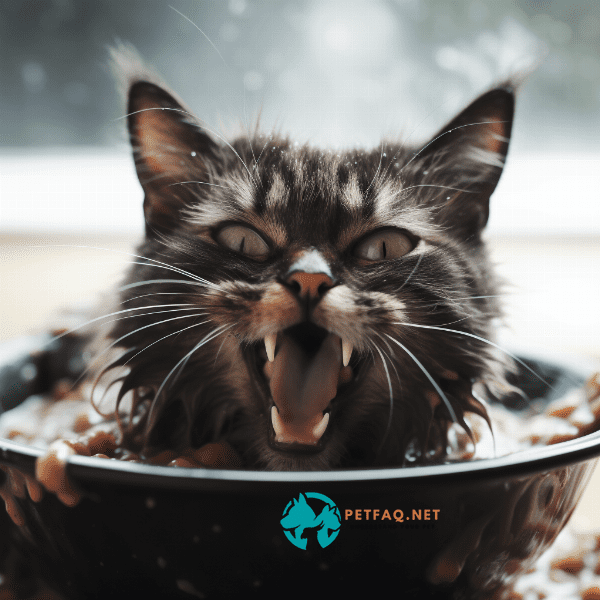
Maintaining Oral Hygiene in Toothless Cats
Even though toothless cats do not have teeth, they still require oral hygiene care to maintain their overall health and wellbeing. In this section, we will discuss some tips for maintaining oral hygiene in toothless cats.
Gum and Tongue Brushing:
Just because a cat does not have teeth does not mean that their gums and tongue do not require cleaning. Regular brushing of the gums and tongue with a soft-bristled brush or cloth can help remove plaque and bacteria.
Providing Dental Chews and Toys:
Dental chews and toys can help keep a toothless cat’s mouth clean and healthy. Soft chews that are designed specifically for toothless cats can help reduce plaque and tartar buildup, and promote healthy gums.
Regular Check-ups with a Veterinarian:
Regular check-ups with a veterinarian are essential to ensure that any potential oral health issues are caught early and treated promptly. This can include oral infections, gum disease, and other conditions that can affect a toothless cat’s overall health.
Avoiding Sticky Treats:
Sticky treats, such as those made with honey or molasses, can stick to a toothless cat’s mouth and cause discomfort. Instead, they should be offered soft treats or those made specifically for toothless cats.
In conclusion, even though toothless cats do not have teeth, they still require oral hygiene care to maintain their overall health and wellbeing. Regular brushing of the gums and tongue, providing dental chews and toys, and regular check-ups with a veterinarian can help ensure that a toothless cat’s mouth stays clean and healthy.

Adapting Your Home for a Toothless Cat
Caring for a toothless cat may require some adaptations to your home environment to ensure their safety and comfort. In this section, we will discuss some tips for adapting your home for a toothless cat.
Soft Bedding:
Toothless cats may experience discomfort when lying on hard surfaces. Providing soft bedding, such as a comfortable cat bed or blanket, can help alleviate this discomfort and provide them with a comfortable place to rest.
Easy Access to Food and Water:
Toothless cats may have difficulty eating and drinking, so it is important to provide easy access to their food and water bowls. This can include placing them at a comfortable height or providing a shallow dish to make it easier for them to drink.
Pet Ramps and Stairs:
Toothless cats may have difficulty navigating stairs or jumping onto high surfaces. Providing pet ramps and stairs can help make it easier for them to move around the house and access their favorite spots.
Non-Slip Flooring:
Toothless cats may have difficulty maintaining their balance, especially on slippery surfaces. Providing non-slip flooring, such as rugs or carpeting, can help prevent slips and falls.
In conclusion, adapting your home for a toothless cat may require some changes to ensure their safety and comfort. Providing soft bedding, easy access to food and water, pet ramps and stairs, and non-slip flooring can all help make life easier for a toothless cat. By making these adaptations, you can help ensure that your toothless cat enjoys a happy and comfortable life in your home.

The Joys of Living with a Toothless Feline Companion
Living with a toothless cat can be a unique and rewarding experience. While there may be some challenges that come with caring for a toothless cat, there are also many joys that come with having a feline companion that is resilient and adaptable. In this section, we will discuss some of the joys of living with a toothless feline companion.
Unwavering Affection:
Toothless cats can be some of the most affectionate cats out there. They are often more reliant on their human companions for support and care, which can lead to a stronger bond between cat and owner.
Unique Personality:
Toothless cats may have a unique personality that sets them apart from other cats. They may be more laid-back or less energetic than other cats, or they may have a distinct temperament that makes them stand out.
Reduced Destructive Behavior:
Since toothless cats cannot chew or bite things, they are less likely to engage in destructive behavior such as scratching furniture or chewing on wires.
Ease of Grooming:
Toothless cats require less grooming than cats with teeth, as they do not need to have their teeth brushed or professionally cleaned. They may also be more receptive to being groomed, since they do not have to worry about the discomfort of having their teeth touched.
In conclusion, living with a toothless feline companion can be a joyous and rewarding experience. They may have a unique personality and bond closely with their owners, while also requiring less maintenance and being less destructive. With the right care and attention, a toothless cat can live a happy and healthy life and bring joy to their human companions.
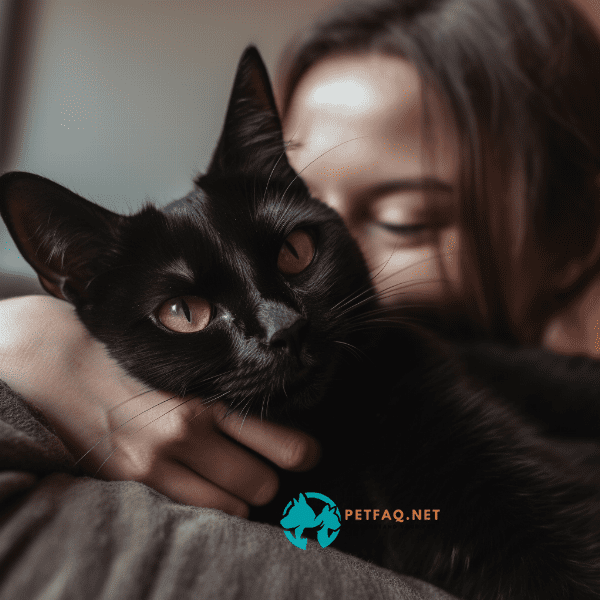
Common Misconceptions About Toothless Cats
There are many misconceptions surrounding toothless cats that can lead to misunderstandings about their care and wellbeing. In this section, we will discuss some of the common misconceptions about toothless cats and why they are not accurate.
While it is true that toothless cats require a special diet that is soft and easy to digest, this does not mean that they cannot eat regular cat food. Some dry kibble can be soaked in water or broth to make it easier to eat, and many brands offer soft or moist food that is suitable for toothless cats.
Misconception #2: Toothless Cats Cannot Groom Themselves
Toothless cats may require some assistance with grooming themselves, especially if they have long hair that can become matted. However, they are still capable of grooming themselves to some extent, and with the right care and attention, they can maintain a healthy coat and skin.
Misconception #3: Toothless Cats Are Fragile or Weak
Toothless cats are not necessarily weaker or more fragile than cats with teeth. They are simply missing their teeth, which can be a challenge for them in terms of eating and oral hygiene. However, with the right care and support, toothless cats can still live happy and healthy lives.
In conclusion, there are many misconceptions surrounding toothless cats that can lead to misunderstandings about their care and wellbeing. By understanding the truth about these misconceptions, we can provide better care for our toothless feline companions and ensure that they enjoy a happy and healthy life.
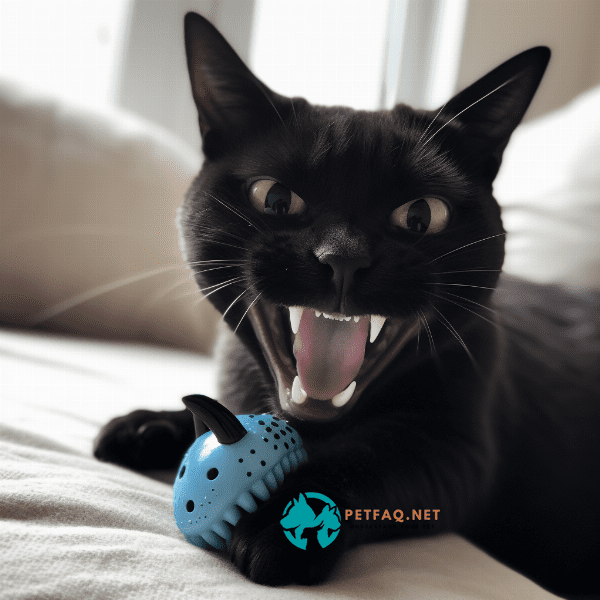
Conclusion: Celebrating the Resilience of Feline Toothless Wonders
Toothless cats have proven time and time again that they can adapt to their circumstances and thrive despite their challenges. They may require some additional care and attention, but they are capable of living happy and healthy lives with the right support from their human companions.
By understanding the unique needs of toothless cats, we can provide them with the care and attention they require to maintain their overall health and wellbeing. This can include providing them with a soft and moist diet, maintaining their oral hygiene, and adapting our homes to their needs.
Toothless cats may face some misconceptions and misunderstandings from those who do not understand their needs, but they are wonderful companions that bring joy and love to our lives. By celebrating the resilience of feline toothless wonders, we can help raise awareness of their unique needs and ensure that they receive the care and attention they deserve.
In conclusion, caring for a toothless cat may require some additional effort, but the rewards are well worth it. These resilient and adaptable creatures can bring joy and love to our lives, and we should celebrate their unique qualities and needs.
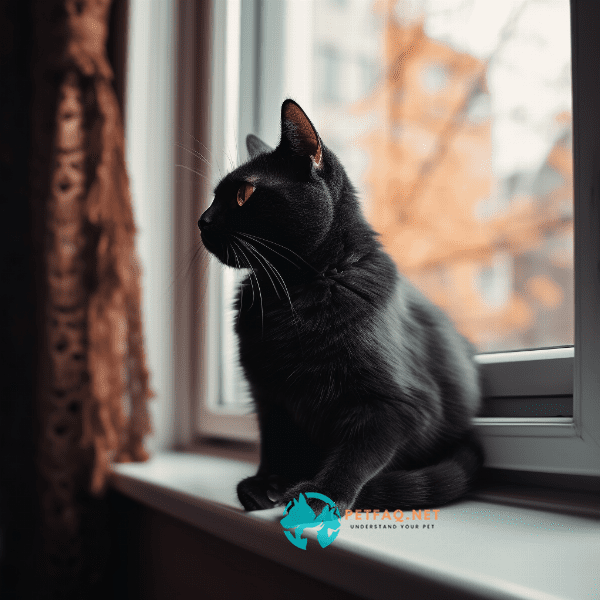
Frequently Asked Questions (FAQs) about cat without teeth:
1. Can cats without teeth still groom themselves effectively?2. Can cats without teeth still play with toys or participate in physical activities?
3. Is it possible to provide dental care for a cat without teeth?
4. Are there any breeds of cats that are more likely to be born without teeth?
5. What is the lifespan of a cat without teeth compared to a cat with teeth?



